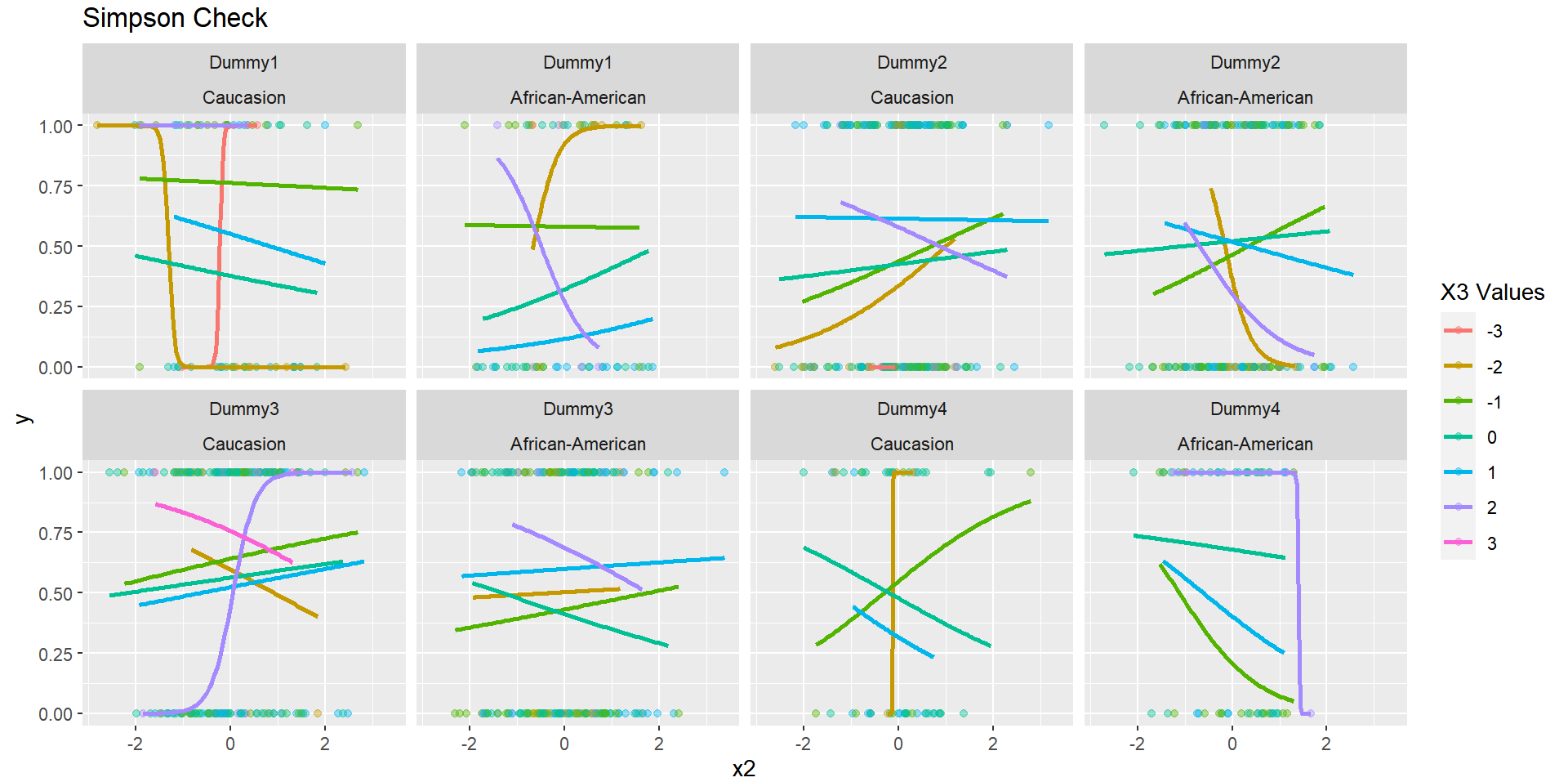This is not homework. This is simple self-learning from real data.
I am fitting a logistic regression model as follows:
$$\text{logit}(p_i) = \beta_0 + \beta_1 race_{i} + \beta_2 x_{2i} + \beta_3 x_{3i} + \beta_4 x_{4i}$$
where $p_i$ is represents the probability of the event in the i-th person.
$race_i$ is a binary variable indicating the race of the i-th observation (with 1 representing black and 0 representing white)
$x_{2,i}$, $x_{3,i}$ are continuous covariates and
$x_{4,i}$ is a categorical covariate with 4 levels (0,1,2,3; coded via 3 dummies)
The results of this model suggest that the white race has a significantly higher odds of experiencing the event, compared to the black race. However, when I examined the data separately for each level of $x_{4}$, I found that within each level (all of them), the black race had a significantly higher risk of experiencing the outcome compared to the white race.
My questions are:
- Would this be an example of Simpson's paradox?
- Is there a better approach available besides analyzing the data separately by each level of $x_4$ and meta-analyzing the results to obtain an overall estimate of the relationship between race and the outcome?


